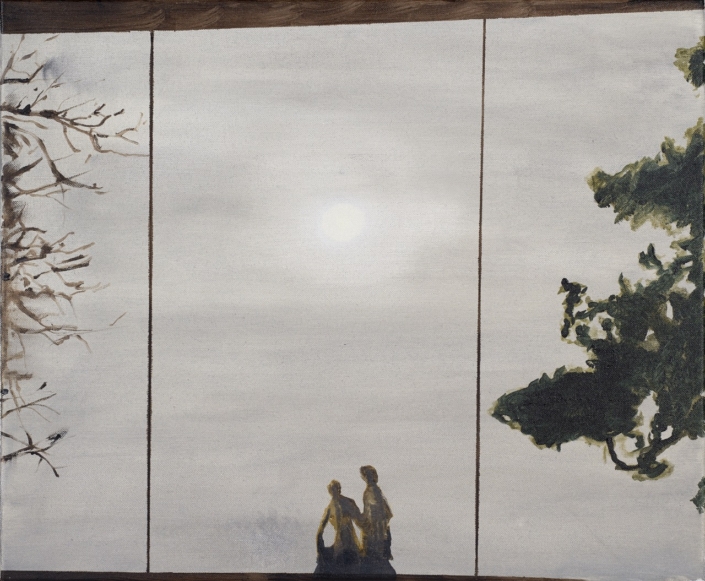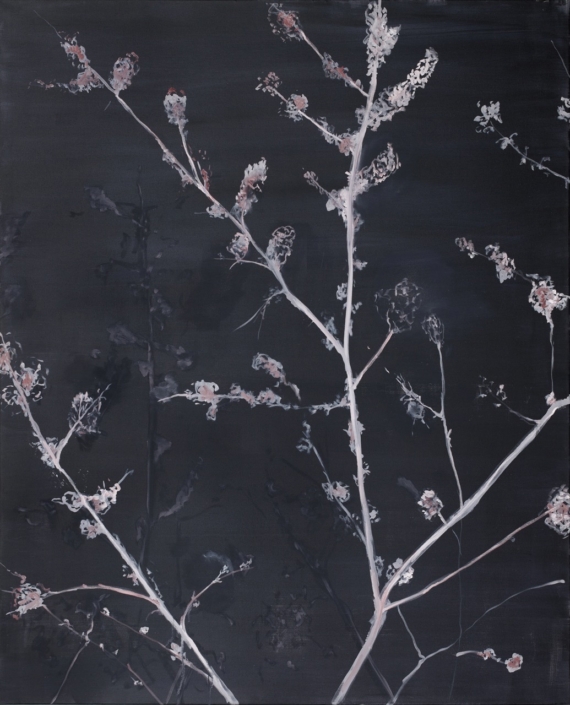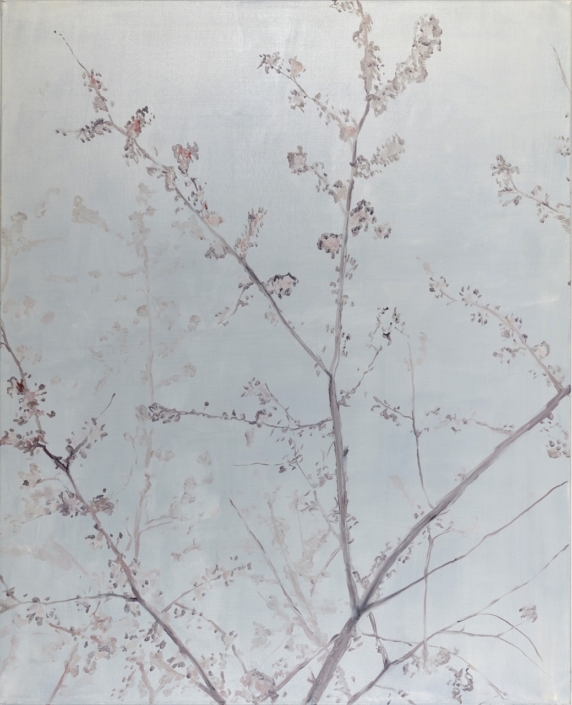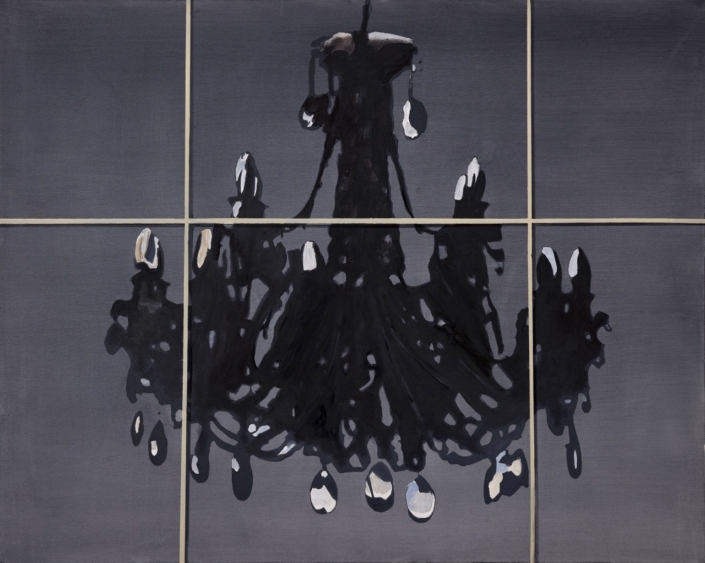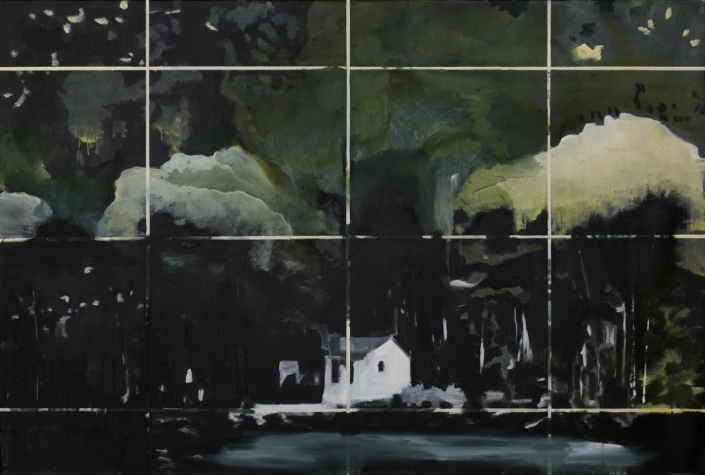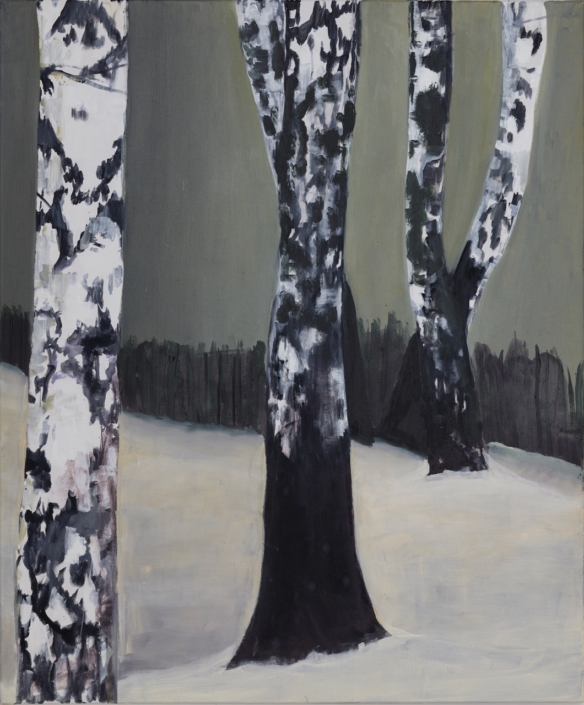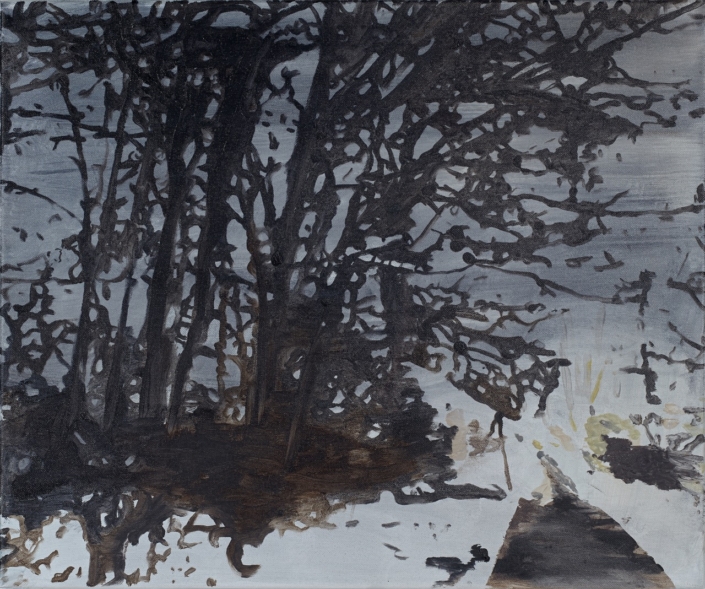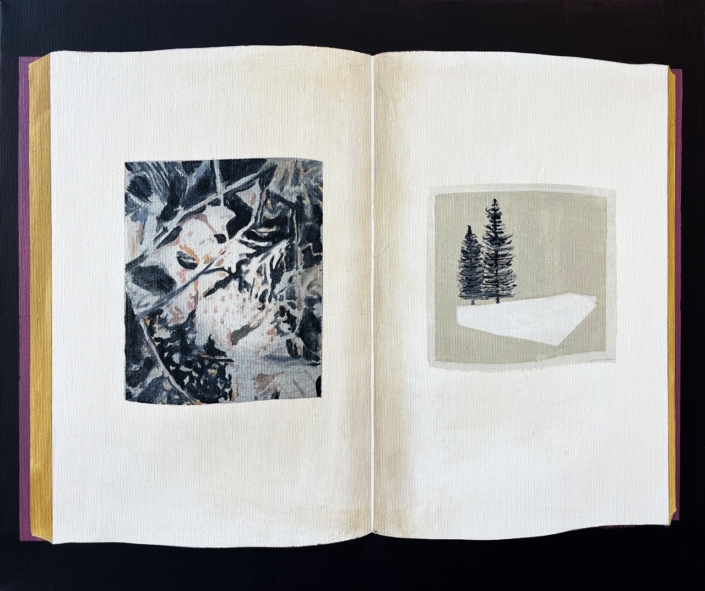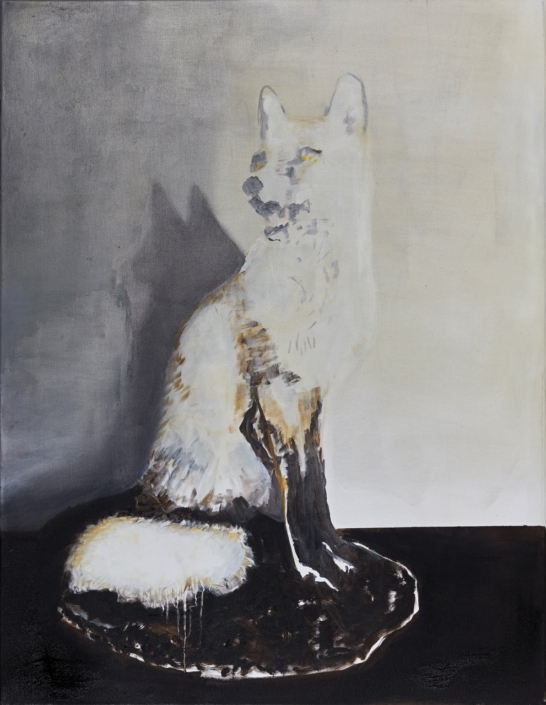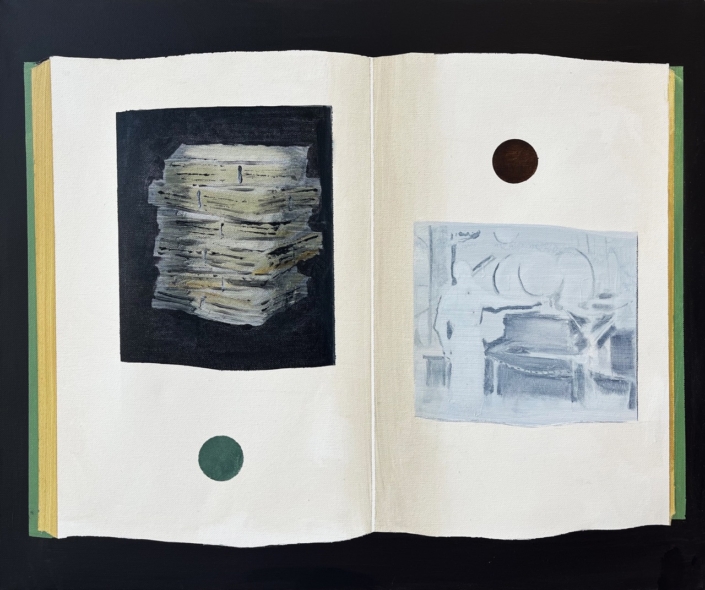Kotscha Reist ‹BADABUM. Born in 1963›
26.5.2023 – 8.7.2023
Like the exhibition title ‹BADABUM. Born 1963›, Kotscha Reist is celebrating his 60th birthday this year. Congratulations and we are very happy to present the latest selection of images. The templates used by the artist are appropriate for the anniversary; the Beatles in a classic pose as well as well-known subjects such as birch trees, animals, stacked boxes and much more.
Kotscha Reist always starts from concrete, thus everyday subjects: people, animals, plants, objects, architectures, scenes in the interior and exterior; often fragmentary, sometimes recurring like the poppy plant, a tent or certain birds. He works from templates, which can be texts and stories as well as pictures or photographs; own and found recordings from the media or the Internet. Not infrequently he moves apparently incidental events and side scenes into the center of the proceedings, whereby the motifs and picture titles do not result in a clearly coherent story. Rather, they evoke individual stories which, when taken together, may form an approach to a collective memory, but in the ambiguous sense of this implied something. References to models from art history, to other artists, or to his own pictures, which Kotscha Reist ‘re-enacts’ variously in more recent works, are also associated with the phenomenon of the afterimage. In the momentary nature of Kotscha Reist’s pictures, presence and absence, the presentness of the moment and its transience appear simultaneously to a certain extent. The often light-toned and rather fine, but no less significant painting style goes hand in hand with this ambivalence between appearing and fading and brings the pictures back, as it were, from the past and memory into a presence of appearance.
By means of his painting, Kotscha Reist repeatedly removes the motifs from their context, decodes them and presents them to us as novel picture compositions. Sometimes they are covered by fine lines or lattice structures that are reminiscent of window bars or the grid of a camera-razor. The grids – as well as the different colored dots and the dark frames on other pictures – clarify the distance between the original and the image and locate our point of view as a beholder outside the picture. In a certain way, Kotscha Reist’s pictures become projection surfaces and picture stages for constantly new performances of motifs in a lively interplay with his painting.

